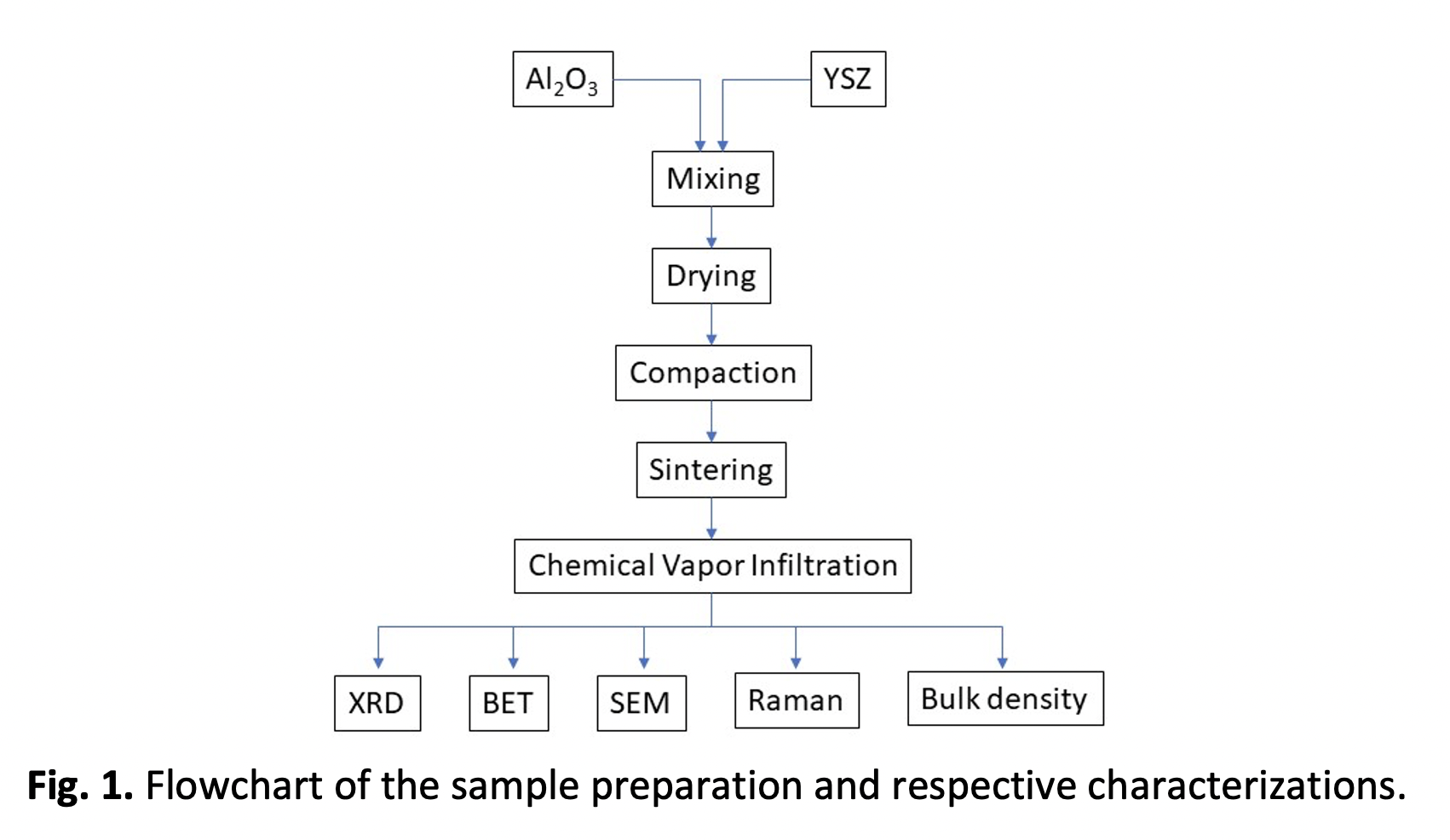The Effect of Carbon Infiltration Through CVI Techniques on The Physical Properties of ZTA
DOI:
https://doi.org/10.37934/araset.28.2.291300Keywords:
ZTA, Alumina, Pyrolitic Carbon, CVI, EFB, porosityAbstract
The preference for a ceramic matrix composite, in many applications, is due to its allowance for alterations, with regards to the filler or reinforcement used. Among the well-known ceramic matrix composites, is the carbon nanotube reinforced ceramic matrix composite. This ceramic composite, which possesses excellent properties, is used exclusively for high-end applications. However, other than the fact that this composite is prone to damage, in a high temperature environment during the sintering process, its use also comes at a high cost. Among the solutions to these drawbacks, is the introduction of carbon into the ceramic composite, through the chemical vapour infiltration (CVI) process. Initially, pyrolysis of biomass is applied on the empty fruit bunch (EFB), for the generation of tar vapour. Pyrolytic carbon is then produced through secondary reaction, during contact with the ceramic surface. The findings, derived from previous studies, indicate that the physical properties of ZTA improve with the infiltration of carbon, until optimum holding time is arrived at. The optimum holding time, of 2.5 hours for the CVI process, is due to the lowest surface area (3.605 m2/g) and the highest density (3.787 g/cm3). This can be attributed to the reduction in porosity, as the holding time increased. Thus, it can be concluded that carbon infiltration will significantly reduce the porosity, and improve the ceramic properties, of zirconia-toughened alumina (ZTA).Downloads
Download data is not yet available.

Downloads
Published
2022-10-31
Issue
Section
Articles



























